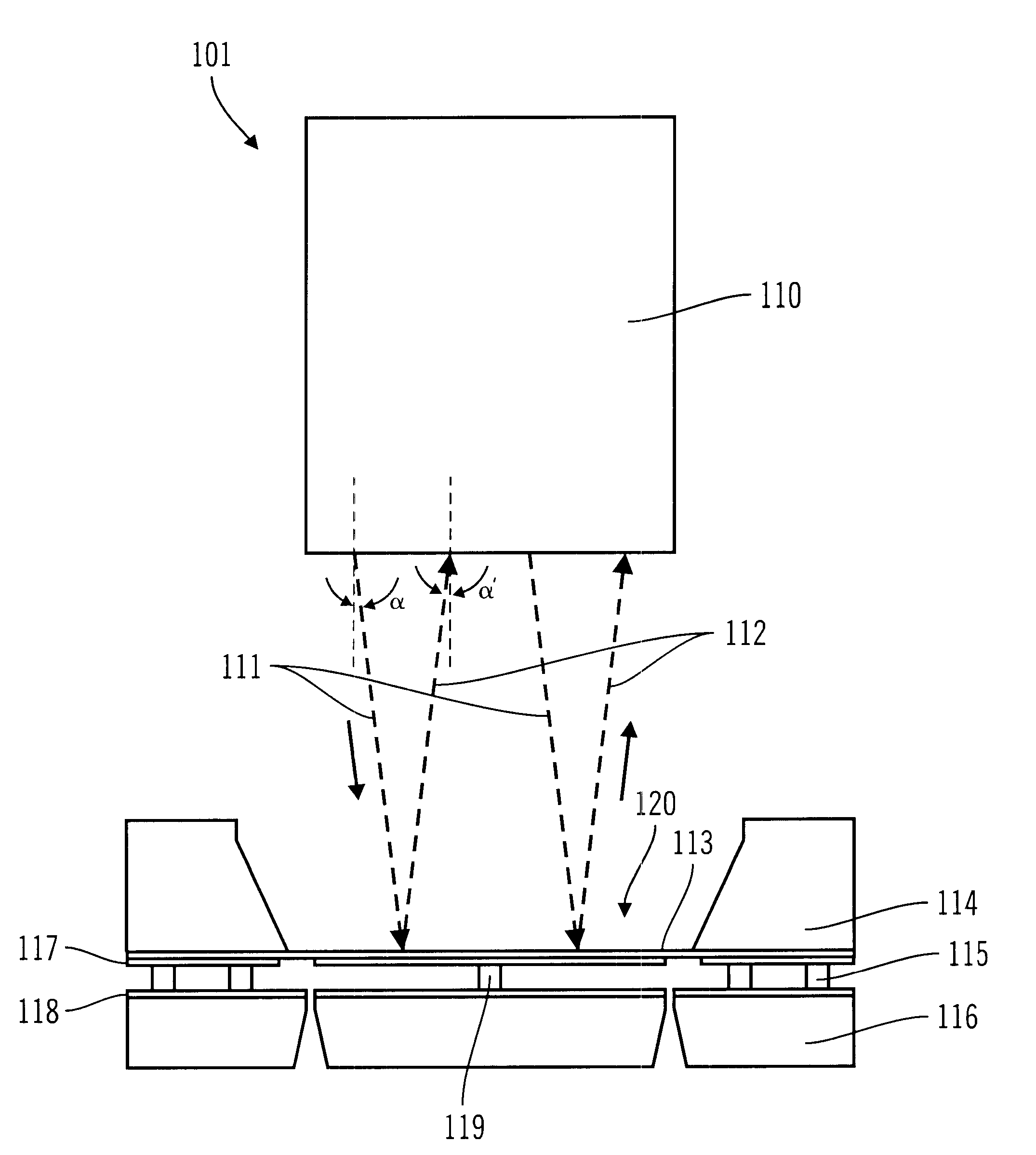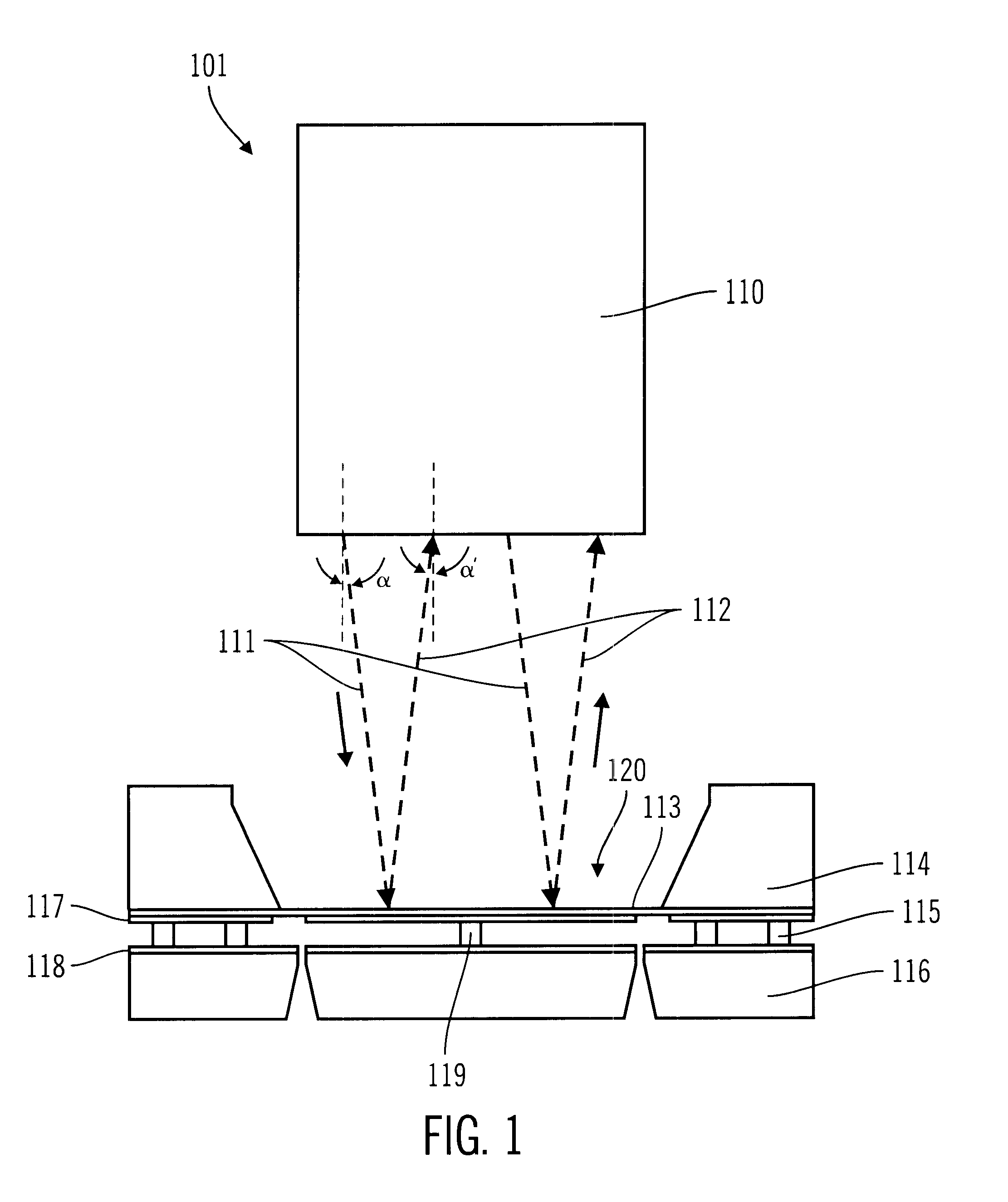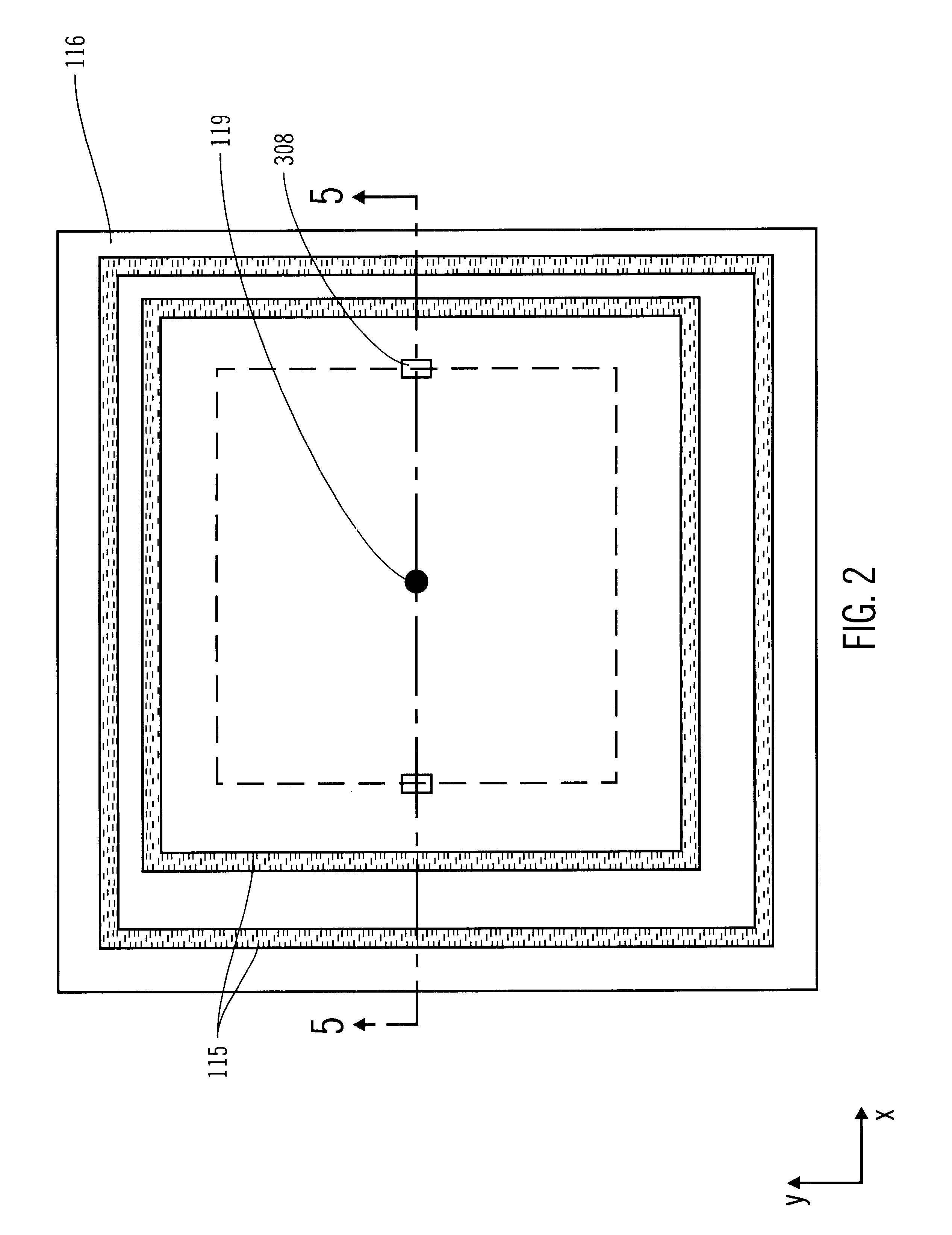Micromachined voltage controlled optical attenuator
a voltage control, micro-machined technology, applied in the direction of optical waveguide light guide, optical element, instrument, etc., can solve the problems of reducing the power level of an optical signal to be received, attenuating the input optical signal at the receiving end, and high price of modern optical components
- Summary
- Abstract
- Description
- Claims
- Application Information
AI Technical Summary
Benefits of technology
Problems solved by technology
Method used
Image
Examples
Embodiment Construction
The present description is of the best presently contemplated mode of carrying out the invention. This description is made for the purpose of illustrating the general principles of the invention and should not be taken in a limiting sense. The scope of the invention is best determined by reference to the appended claims.
Turning first to FIG. 1, it is a schematic diagram of an optical attenuator 101 in accordance with one embodiment of the present invention. It has a planar mirror 113, which is a flexible conductive membrane, attached to an upper semiconductor structure 114. The upper semiconductor structure 114 is bonded with a lower semiconductor structure 116, separated by spacers 115. A spacing post 119 is placed between the lower and upper semiconductor structures, at or near the center of the planar mirror 113. Conductive layers 117 and 118 are coated on the bottom surface of the upper structure 114 and the top surface of the bottom structure 116. Such conductive layers can act...
PUM
 Login to View More
Login to View More Abstract
Description
Claims
Application Information
 Login to View More
Login to View More - R&D
- Intellectual Property
- Life Sciences
- Materials
- Tech Scout
- Unparalleled Data Quality
- Higher Quality Content
- 60% Fewer Hallucinations
Browse by: Latest US Patents, China's latest patents, Technical Efficacy Thesaurus, Application Domain, Technology Topic, Popular Technical Reports.
© 2025 PatSnap. All rights reserved.Legal|Privacy policy|Modern Slavery Act Transparency Statement|Sitemap|About US| Contact US: help@patsnap.com



